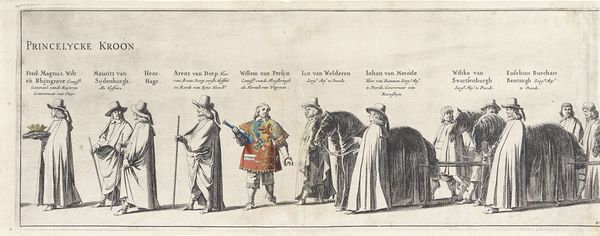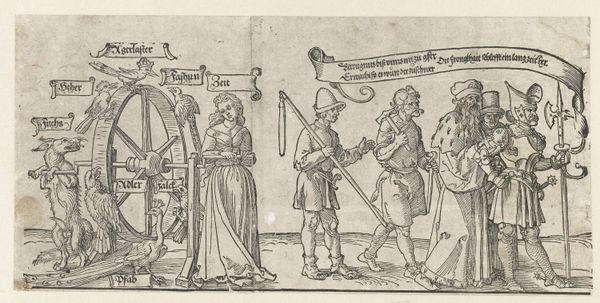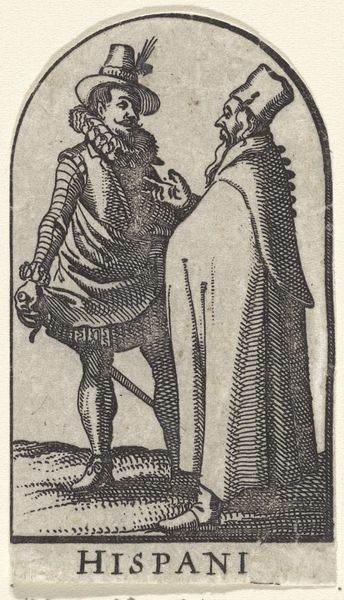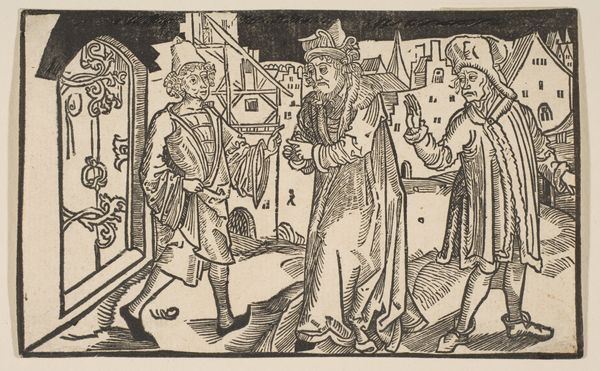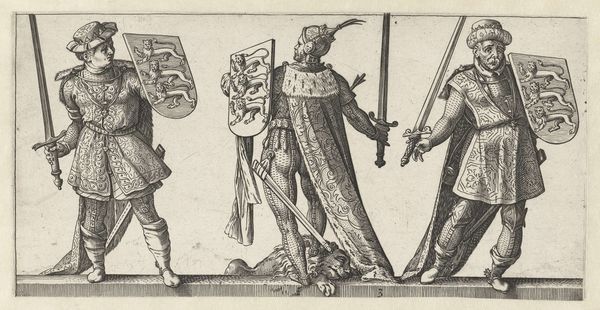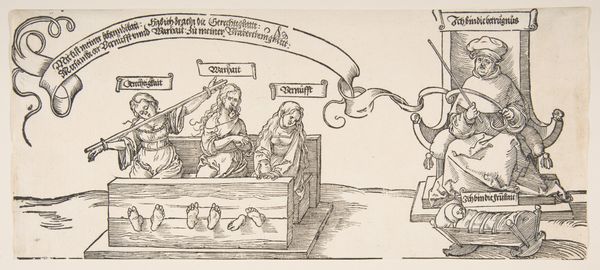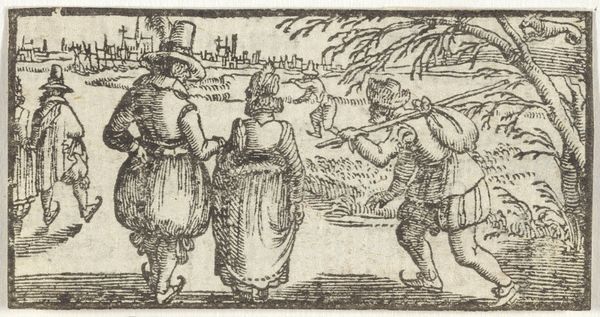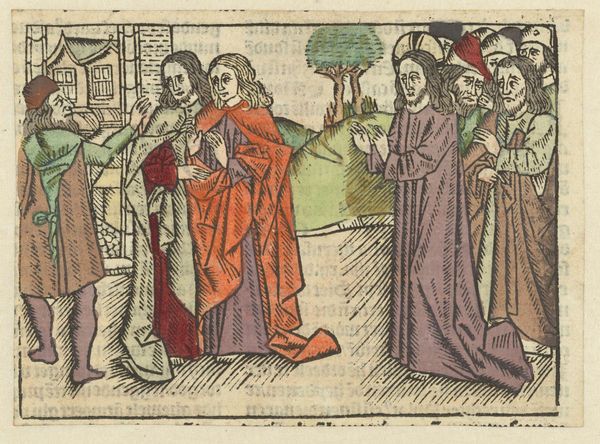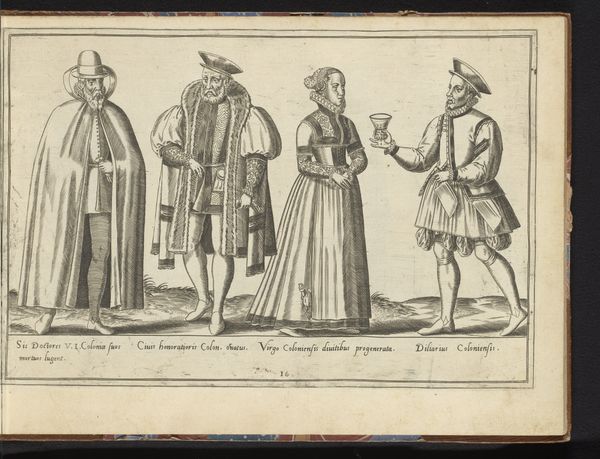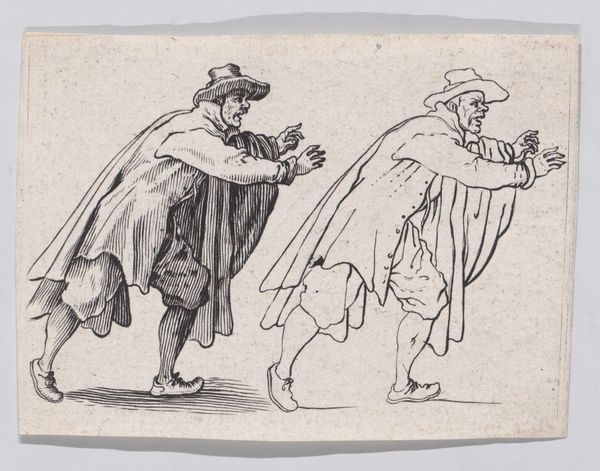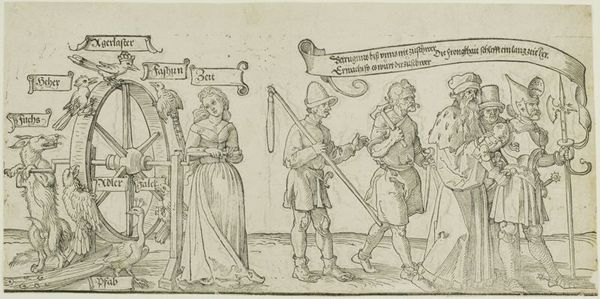
drawing, print, ink, woodcut
#
drawing
#
ink drawing
#
narrative-art
# print
#
figuration
#
ink
#
woodcut
#
northern-renaissance
Dimensions: sheet: 5 1/4 x 10 3/16 in. (13.3 x 25.9 cm)
Copyright: Public Domain
Editor: "The Tapestry at Michelfeld" made sometime between 1485 and 1528 by Albrecht Dürer is quite striking. The figures appear almost satirical. I am especially intrigued by the strange text hovering over each figure, making them seem more symbolic than representational. What kind of message do you think Dürer was trying to convey with this piece? Curator: It's important to understand the socio-political context. Dürer lived during a time of significant religious and social upheaval with the rise of Protestantism and criticism of the Catholic Church. Considering that, notice the figure on the left with the ecclesiastical garb and how he holds...what appears to be snake? Do you think the tapestry might be critiquing religious authority and the corruption associated with it? Editor: It's certainly hard to miss, though the figure on the right is quite different; less obviously 'corrupt'. And there's also this middle figure with their gesture, as though offering an explanation? The three are distinct... so you are suggesting the composition comments on the state of religion and potentially of societal hierarchy? Curator: Exactly. Dürer often engaged with the anxieties of his time, and I would interpret that through an allegorical lens and consider these three not merely individuals but social types. Look at how the banners intersect – that isn’t just decoration, but active participation in meaning. What social tensions might have informed the artwork's original reception? How did these figures become 'types' to be critiqued or mocked, and what did such representation mean for the public's perception of social norms? Editor: So the value of this tapestry resides in not just its artistry but also its capability to mirror, challenge, and record its society’s moral compass during a tumultuous period. Understanding this interplay clarifies so much, thank you! Curator: Indeed! Examining the context helps us to see past face value. It is quite an active agent in shaping societal opinions of its era.
Comments
No comments
Be the first to comment and join the conversation on the ultimate creative platform.
